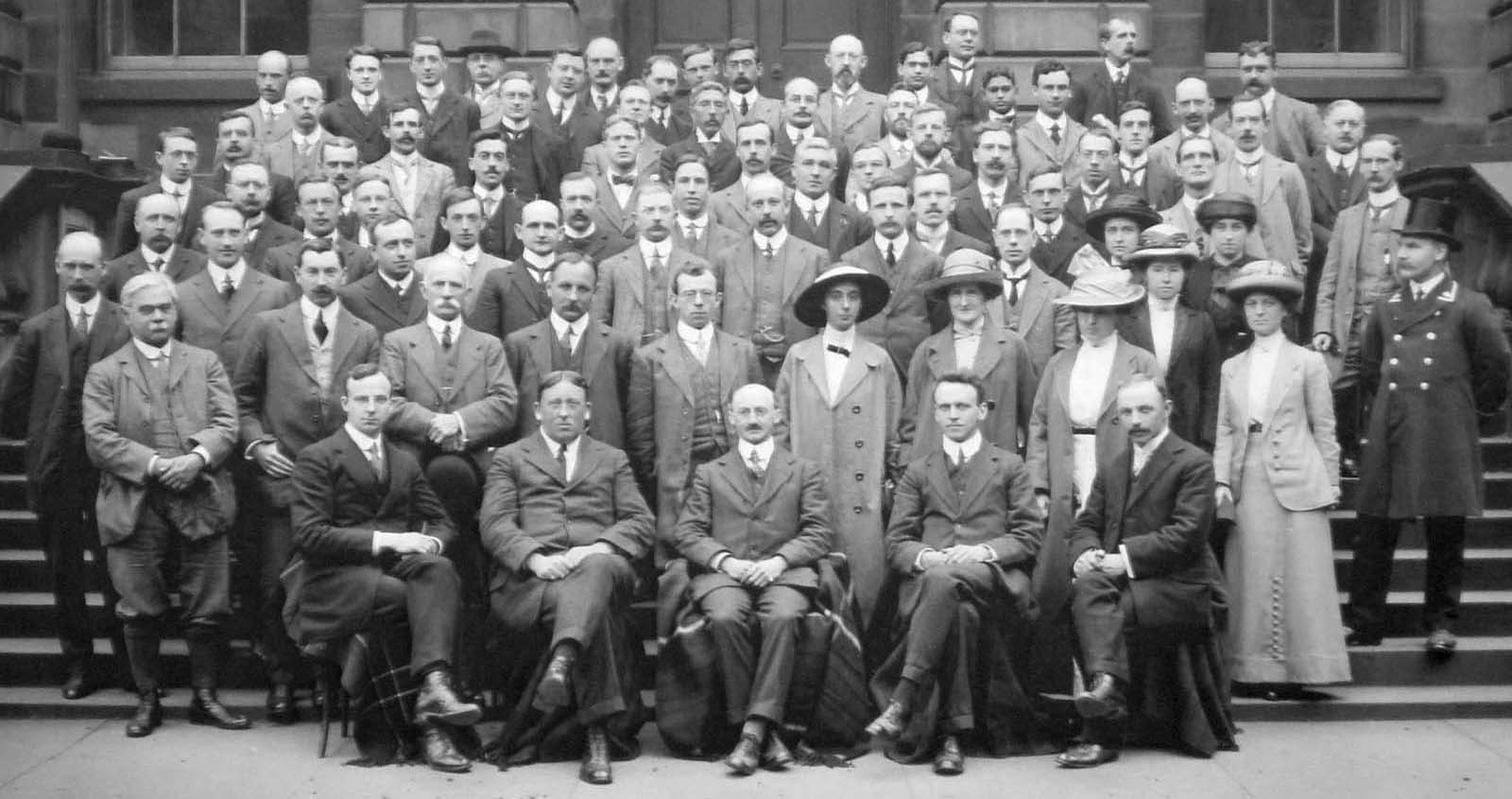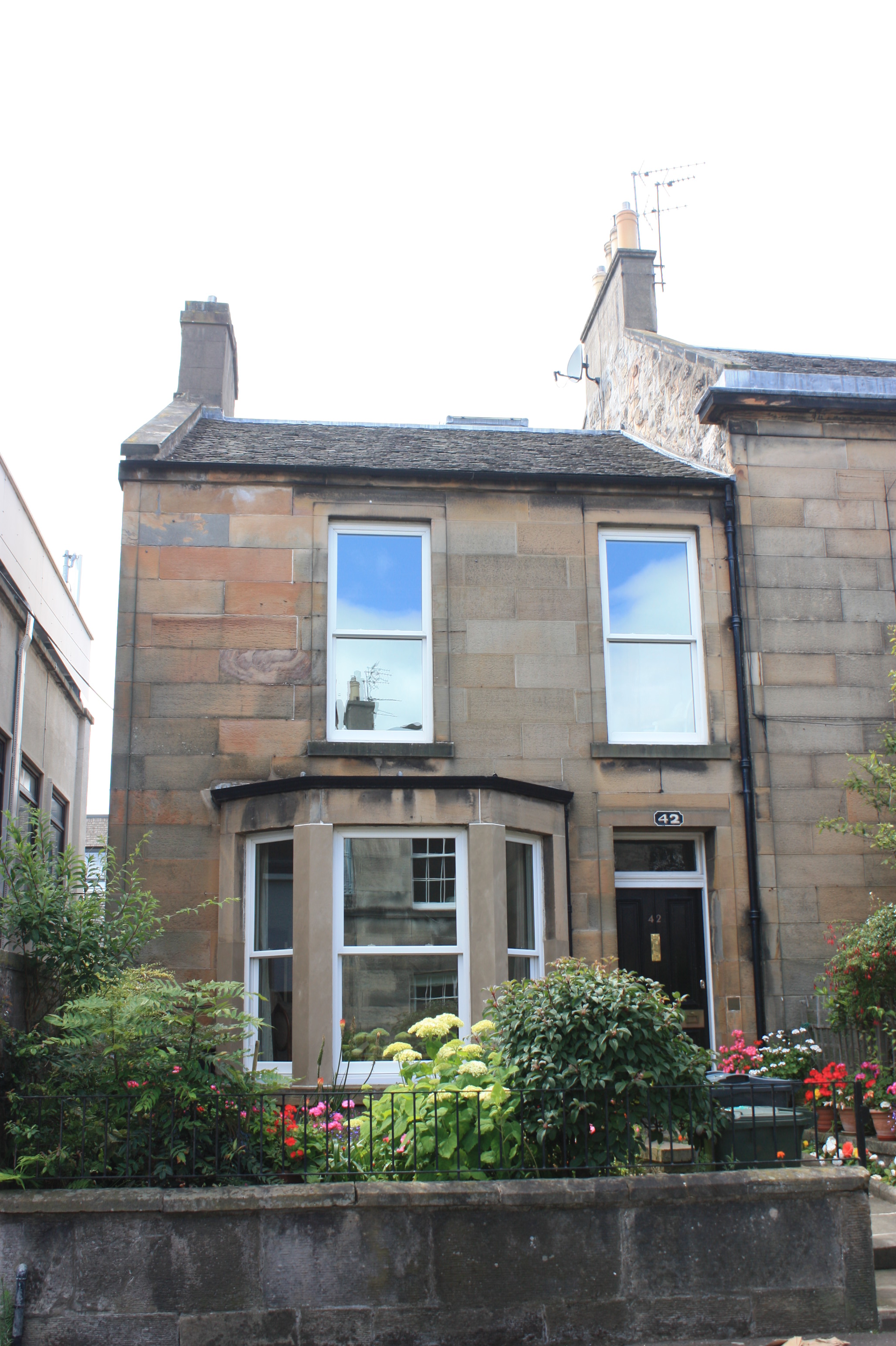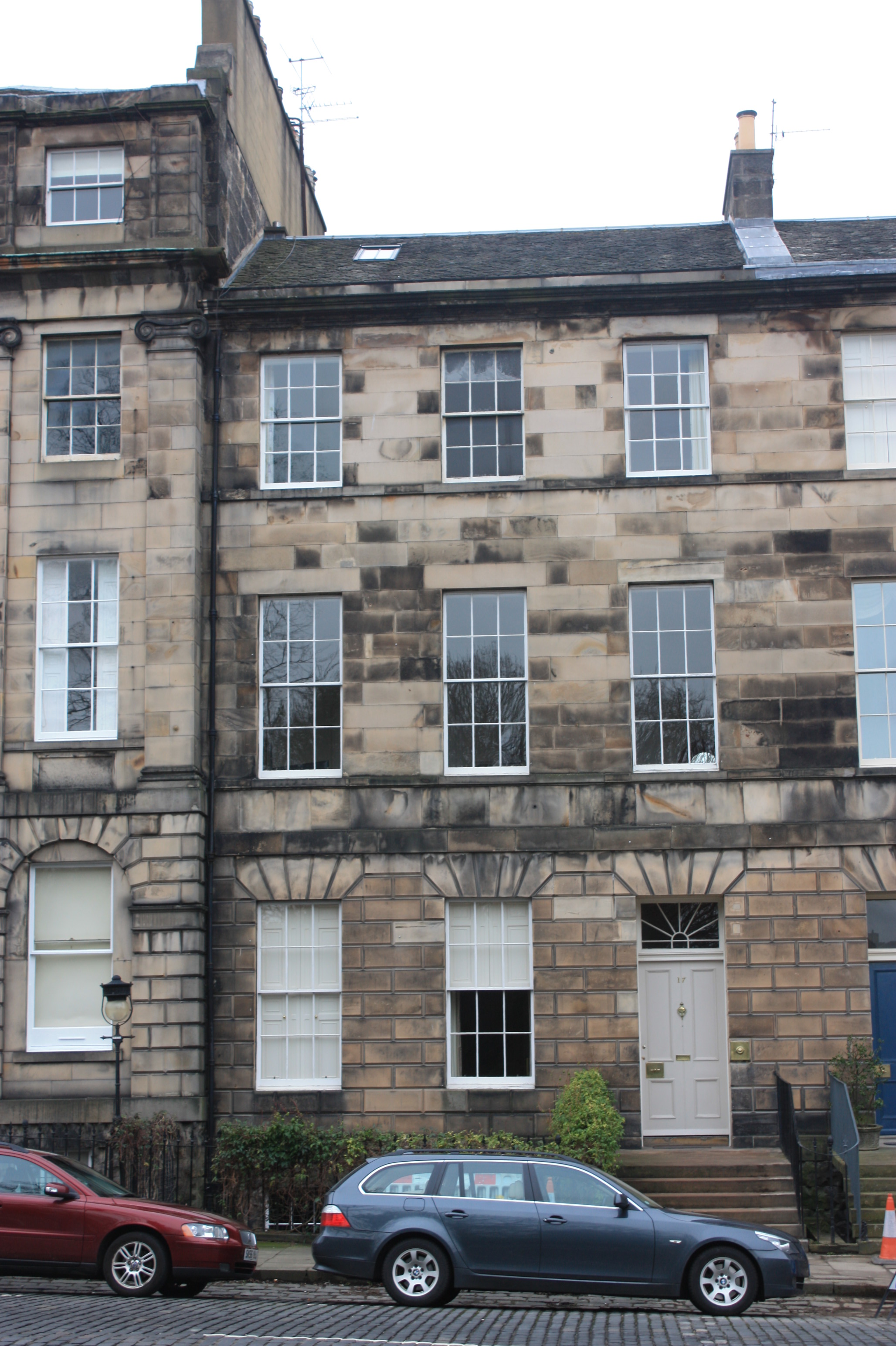|
John Steggall
Prof John Edward Aloysius Steggall ARIBA FRSE LLD (1855–1935) was an English mathematician and professor at the University College, Dundee (now University of Dundee). Life and work He was born on 19 November 1855 in London, the son of Dr J W B Steggall of Charing Cross Hospital, a physician and surgeon, living at Queen Square in Bloomsbury. He attended the City of London School before entering Trinity College, Cambridge, where he graduated second wrangler in the Mathematical Tripos of 1878 and winning the Smith's Prize of that year. He taught as Assistant Master at Clifton College, Bristol from 1878-1879, before becoming Fielden Lecturer at Owens College, Manchester, from 1880 to 1882. In 1883 he was appointed as the Chair of Mathematics and Natural Philosophy (Physics) in the newly instituted University College at Dundee. He lived at "Woodend" in Perth. In 1885 he was elected a Fellow of the Royal Society of Edinburgh. His proposers were Balfour Stewart, William Evans ... [...More Info...] [...Related Items...] OR: [Wikipedia] [Google] [Baidu] |
London
London is the capital and largest city of England and the United Kingdom, with a population of just under 9 million. It stands on the River Thames in south-east England at the head of a estuary down to the North Sea, and has been a major settlement for two millennia. The City of London, its ancient core and financial centre, was founded by the Romans as '' Londinium'' and retains its medieval boundaries.See also: Independent city § National capitals The City of Westminster, to the west of the City of London, has for centuries hosted the national government and parliament. Since the 19th century, the name "London" has also referred to the metropolis around this core, historically split between the counties of Middlesex, Essex, Surrey, Kent, and Hertfordshire, which largely comprises Greater London, governed by the Greater London Authority.The Greater London Authority consists of the Mayor of London and the London Assembly. The London Mayor is distinguished fr ... [...More Info...] [...Related Items...] OR: [Wikipedia] [Google] [Baidu] |
Fielden Professor Of Pure Mathematics
The Fielden Chair of Pure Mathematics is an endowed professorial position in the School of Mathematics, University of Manchester, England. History In 1870 Samuel Fielden, a wealthy mill owner from Todmorden, donated £150 to Owens College (as the Victoria University of Manchester was then called) for the teaching of evening classes and a further £3000 for the development of natural sciences at the college. From 1877 this supported the Fielden Lecturer, subsequently to become the Fielden Reader with the appointment of L. J. Mordell in 1922 and then Fielden Professor in 1923. Alex Wilkie FRS was appointed to the post in 2007. Holders Previous holders of the Fielden Chair (and lectureship) are: * A. T. Bentley (1876–1880) Lecturer in Pure Mathematics * J. E. A. Steggall (1880–1883) Lecturer in Pure Mathematics * R. F. Gwyther (1883–1907) Lecturer in Mathematics * F. T. Swanwick (1907–1912) Lecturer in Mathematics * H. R. Hasse (1912–1918) Lecturer in Mathematic ... [...More Info...] [...Related Items...] OR: [Wikipedia] [Google] [Baidu] |
Association For The Improvement Of Geometrical Teaching
The Mathematical Association is a professional society concerned with mathematics education in the UK. History It was founded in 1871 as the Association for the Improvement of Geometrical Teaching and renamed to the Mathematical Association in 1894. It was the first teachers' subject organisation formed in England. In March 1927, it held a three-day meeting in Grantham to commemorate the bicentenary of the death of Sir Isaac Newton, attended by Sir J. J. Thomson (discoverer of the electron), Sir Frank Watson Dyson – the Astronomer Royal, Sir Horace Lamb, and G. H. Hardy. In 1951, Mary Cartwright became the first female president of the Mathematical Association. In the 1960s, when comprehensive education was being introduced, the Association was in favour of the 11-plus system. For maths teachers training at university, a teaching award that was examined was the Diploma of the Mathematical Association, later known as the Diploma in Mathematical Education of the Mathematical A ... [...More Info...] [...Related Items...] OR: [Wikipedia] [Google] [Baidu] |
Ellice Horsburgh
Dr Ellice Martin Horsburgh FRSE AMICE (1870 – 28 December 1935) was a Scottish mathematician and engineer. He was an expert on numismatics and a skilled photographer. Life He was born in Kelso in 1870, the son of Ellen Sarah Vost and the Rev Andrew Horsburgh, a preacher and missionary in India. He was educated at the Collegiate School, 27/28 Charlotte Square in Edinburgh. He then trained for the Indian Civil Service with Wren and Gurney but, falling very ill, was instructed to go to Australia to improve his health. During this sea journey he became interested in navigational mathematics. He arrived at Melbourne during a financial panic and then got mixed up in the Coolgardie Gold Rush of 1892. After two years of little success as a gold miner he returned to Scotland in 1894. He then went to the University of Edinburgh where he graduated MA BSc in engineering in 1897. He gained a further BSc in mathematics and natural philosophy (physics) in 1899. He began lecturing in elec ... [...More Info...] [...Related Items...] OR: [Wikipedia] [Google] [Baidu] |
Ernest Wedderburn
Sir Ernest MacLagan Wedderburn (3 February 1884 – 3 June 1958) was a Scottish lawyer, and a significant figure both in the civic life of Edinburgh and in the legal establishment. He held the posts of Professor of Conveyancing in the University of Edinburgh (1922–35), Deputy Keeper of the Signet (1935–54), and Chairman of the General Council of Solicitors (1936–49), the forerunner to the Law Society of Scotland, and chaired the latter 1949/50. He was also an enthusiastic amateur scientist, and first Treasurer then Vice President of the Royal Society of Edinburgh. Early life Wedderburn was born in Forfar, Forfarshire in 1884, the son of Anne Oglivie and her husband (and cousin), Dr Alexander Stormonth MacLagan Wedderburn of Pearsie. He was one of 14 children, and the younger brother of Joseph Wedderburn, who became Professor of Mathematics at Princeton and conceive the Wedderburn–Etherington number and Artin–Wedderburn theorem. He was distantly related, through h ... [...More Info...] [...Related Items...] OR: [Wikipedia] [Google] [Baidu] |
Edmund Taylor Whittaker
Sir Edmund Taylor Whittaker (24 October 1873 – 24 March 1956) was a British mathematician, physicist, and historian of science. Whittaker was a leading mathematical scholar of the early 20th-century who contributed widely to applied mathematics and was renowned for his research in mathematical physics and numerical analysis, including the theory of special functions, along with his contributions to astronomy, celestial mechanics, the history of physics, and digital signal processing. Among the most influential publications in Whittaker’s bibliography, he authored several popular reference works in mathematics, physics, and the history of science, including ''A Course of Modern Analysis'' (better known as ''Whittaker and Watson''), ''Analytical Dynamics of Particles and Rigid Bodies'', and ''A History of the Theories of Aether and Electricity''. Whittaker is also remembered for his role in the relativity priority dispute, as he credited Henri Poincaré and Hendrik Lorentz ... [...More Info...] [...Related Items...] OR: [Wikipedia] [Google] [Baidu] |
Cargill Gilston Knott
Cargill Gilston Knott FRS, FRSE LLD (30 June 1856 – 26 October 1922) was a Scottish physicist and mathematician who was a pioneer in seismological research. He spent his early career in Japan. He later became a Fellow of the Royal Society, Secretary of the Royal Society of Edinburgh, and President of the Scottish Meteorological Society. Biography Knott was born in Penicuik, Midlothian, the son of Pelham Knott, an agent for a paper manufacturer and his wife Ellen. His paternal uncle was the artist Tavernor Knott. He was educated at Arbroath High School in Angus, and attended the University of Edinburgh, where he studied alongside James Alfred Ewing. He worked on various aspects of electricity and magnetism, obtaining his doctorate in 1879. He was appointed as an assistant in Natural Philosophy at the University of Edinburgh in 1879, and held this post until 1883, when he left to take up a post at Tokyo Imperial University. He was elected as a Fellow of the Royal Society of ... [...More Info...] [...Related Items...] OR: [Wikipedia] [Google] [Baidu] |
Peter Guthrie Tait
Peter Guthrie Tait FRSE (28 April 1831 – 4 July 1901) was a Scottish mathematical physicist and early pioneer in thermodynamics. He is best known for the mathematical physics textbook '' Treatise on Natural Philosophy'', which he co-wrote with Lord Kelvin, and his early investigations into knot theory. His work on knot theory contributed to the eventual formation of topology as a mathematical discipline. His name is known in graph theory mainly for Tait's conjecture. He is also one of the namesakes of the Tait–Kneser theorem on osculating circles. Early life Tait was born in Dalkeith on 28 April 1831 the only son of Mary Ronaldson and John Tait, secretary to the 5th Duke of Buccleuch. He was educated at Dalkeith Grammar School then Edinburgh Academy. He studied Mathematics and Physics at the University of Edinburgh, and then went to Peterhouse, Cambridge, graduating as senior wrangler and first Smith's prizeman in 1852. As a fellow and lecturer of his college he remai ... [...More Info...] [...Related Items...] OR: [Wikipedia] [Google] [Baidu] |
Patrick Geddes
Sir Patrick Geddes (2 October 1854 – 17 April 1932) was a British biologist, sociologist, Comtean positivist, geographer, philanthropist and pioneering town planner. He is known for his innovative thinking in the fields of urban planning and sociology. Following the philosophies of Auguste Comte and Frederic LePlay, he introduced the concept of "region" to architecture and planning and coined the term "conurbation". Later, he elaborated "neotechnics" as the way of remaking a world apart from over-commercialization and money dominance. An energetic Francophile, Geddes was the founder in 1924 of the Collège des Écossais (Scots College), an international teaching establishment in Montpellier, France, and in the 1920s he bought the Château d'Assas to set up a centre for urban studies. Biography The son of Janet Stevenson and soldier Alexander Geddes, Patrick Geddes was born in Ballater, Aberdeenshire, and educated at Perth Academy. He studied at the Royal College ... [...More Info...] [...Related Items...] OR: [Wikipedia] [Google] [Baidu] |
William Evans Hoyle
Dr William Evans Hoyle FRSE (28 January 1855 – 7 February 1926) was a noted British zoologist. A specialist in deep sea creatures he worked on classification and illustrations from the Challenger Expedition from 1882 to 1888. Life Hoyle was born in Manchester the son of William Jennings Hoyle, an engraver. He was educated at Owens College and at Exeter College and Christ Church, Oxford where he obtained a Bachelor of Arts in 1877, Master of Arts in 1882 and a Doctor of Science, he was also Member of the Royal College of Surgeons. He was the Director of the Manchester Museum from 1889 to 1909 and then was the first director of the National Museum of Wales from 1909 up to his retirement in 1926. Trained as a medical anatomist, Hoyle is most famous for his monographic studies on cephalopods from major exploring expeditions of his era including the Challenger, the Albatross, the British National Antarctic Expedition and the Scottish National Antarctic Expedition. In 18 ... [...More Info...] [...Related Items...] OR: [Wikipedia] [Google] [Baidu] |
Balfour Stewart
Balfour Stewart (1 November 182819 December 1887) was a Scottish physicist and meteorologist. His studies in the field of radiant heat led to him receiving the Rumford Medal of the Royal Society in 1868. In 1859 he was appointed director of Kew Observatory. He was elected professor of physics at Owens College, Manchester, and retained that chair until his death, which happened near Drogheda, in Ireland, on 19 December 1887. He was the author of several successful science textbooks, and also of the article on "Terrestrial Magnetism" in the ninth edition of the Encyclopædia Britannica. Career Stewart was born on 1 November 1828 at 1 London Row in Leith (north of Edinburgh), the son of William Stewart a tea-merchant, and his wife, Jane Clouston. His father was involved in business in Great Britain and Australia. He was educated at Dundee. He then studied Physics at the University of St Andrews, and the University of Edinburgh. Following his studies of physics at Edinburgh, he b ... [...More Info...] [...Related Items...] OR: [Wikipedia] [Google] [Baidu] |
Royal Society Of Edinburgh
The Royal Society of Edinburgh is Scotland's national academy of science and letters. It is a registered charity that operates on a wholly independent and non-partisan basis and provides public benefit throughout Scotland. It was established in 1783. , there are around 1,800 Fellows. The Society covers a broader selection of fields than the Royal Society of London, including literature and history. Fellowship includes people from a wide range of disciplines – science & technology, arts, humanities, medicine, social science, business, and public service. History At the start of the 18th century, Edinburgh's intellectual climate fostered many clubs and societies (see Scottish Enlightenment). Though there were several that treated the arts, sciences and medicine, the most prestigious was the Society for the Improvement of Medical Knowledge, commonly referred to as the Medical Society of Edinburgh, co-founded by the mathematician Colin Maclaurin in 1731. Maclaurin was unhappy ... [...More Info...] [...Related Items...] OR: [Wikipedia] [Google] [Baidu] |






